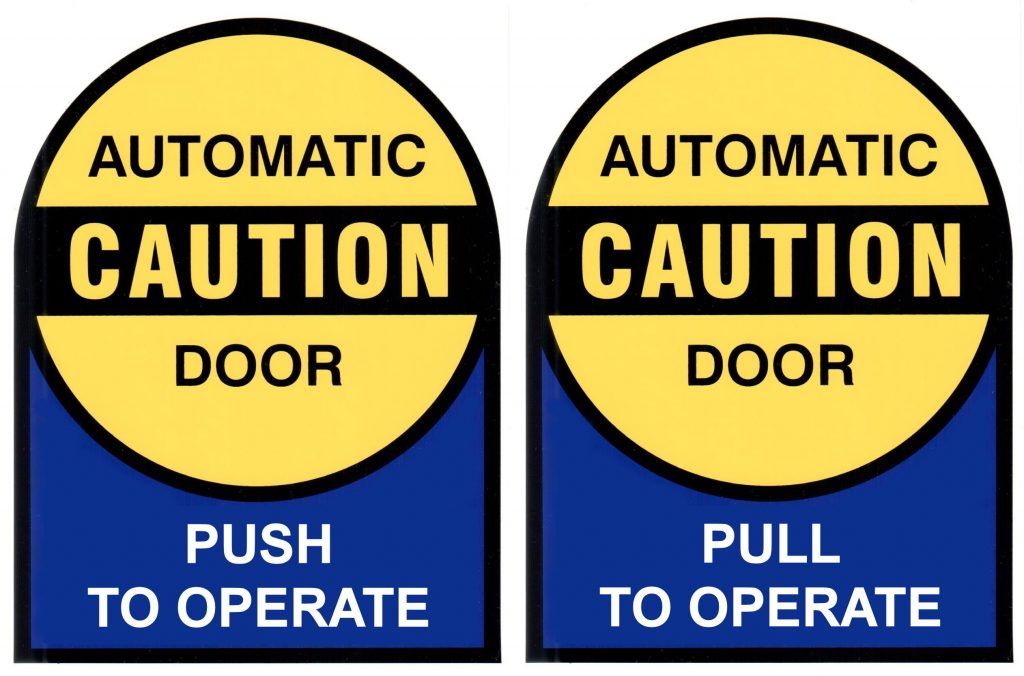 In yesterday’s post, I wrote about power-assist operators to clarify that these are not the same as low-energy automatic operators. This 2-part question arose from a misconception that “power-assist” is the same thing as “Push ‘N Go.” Refer back to yesterday’s post if you need more information about power-assist operators; here’s some more information about Push ‘N Go…
In yesterday’s post, I wrote about power-assist operators to clarify that these are not the same as low-energy automatic operators. This 2-part question arose from a misconception that “power-assist” is the same thing as “Push ‘N Go.” Refer back to yesterday’s post if you need more information about power-assist operators; here’s some more information about Push ‘N Go…
The Push ‘N Go feature on an LCN automatic operator is a means of actuating a low-energy automatic operator by pushing or pulling the door. When the door is pushed or pulled to an open position of 5 degrees (+/- 3 inches), the door continues the opening cycle automatically and does not require the user to operate the door manually beyond this point.
As I wrote in a past Decoded article, low-energy operators must be initiated by a “knowing act,” which may be a push plate actuator or non-contact switch mounted on the wall or jamb, an access control device like a card reader, keypad, or keyswitch, or the act of pushing or pulling the door. The Push ‘N Go feature is considered a knowing act; entering the field of a motion sensor is not.
One thing to keep in mind regarding the Push ‘N Go feature is that depending on the operator it can require 8-12 pounds of force to manually open the door to 5 degrees – the point where the door begins to open automatically. Many states allow up to 15 pounds of force to open an exterior door, or rely on the limits stated in the International Building Code (IBC) – 30 pounds to set the door in motion, and 15 pounds to open the door to the fully-open position. The Push ‘N Go feature would comply with those limitations as long as there aren’t other factors that increase the opening force (binding, wind, etc.).
However, in some jurisdictions the opening force for exterior doors is limited to 5 pounds or 8.5 pounds, and interior non-fire-rated doors are subject to a 5-pound limit on opening force. For those locations, the Push ‘N Go feature may require too much force to be compliant with the accessibility standards. There may be other products available that require less force to move the door far enough for the auto operator to take over, but it’s important to verify this – preferably prior to installation.
You need to login or register to bookmark/favorite this content.






OK, I think I need this spelled-out. Is the main difference between a power-assist and push-n-go the amount of opening force to initiate the opening cycle?
The difference is that a low-energy operator with push-n-go starts the automatic-opening cycle when someone pushes or pulls on the door, and the door opens by itself. A power-assist, regardless of how it’s actuated, only reduces the opening force – someone still has to open the door manually.
– Lori
Got it. Thanks!
Why go to the trouble and expense of a “power assist” when you can have fully automatic for the same cost. Plus the fact that you don’t have to worry about clearances around the door with fully automatic. It’s no wonder that power assist is rarely used.
That’s a very good question.
– Lori
Maybe you have an individual, a child in a wheelchair for instance, who will not always be around doors that open for them with only initiation and you want to teach them how to open the door and maneuver the chair through. As I understand it, power assist would make a heavy door easier to open and delay closing as the child learns how to get through before it closes.